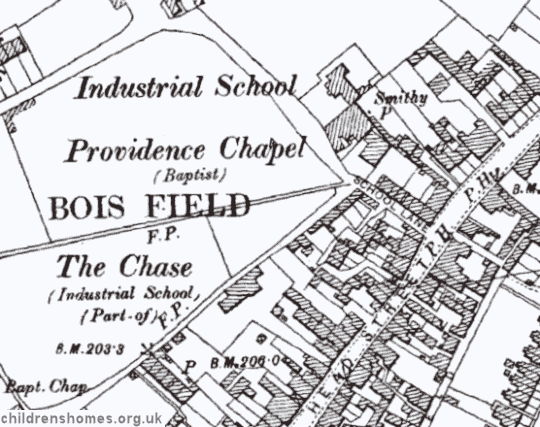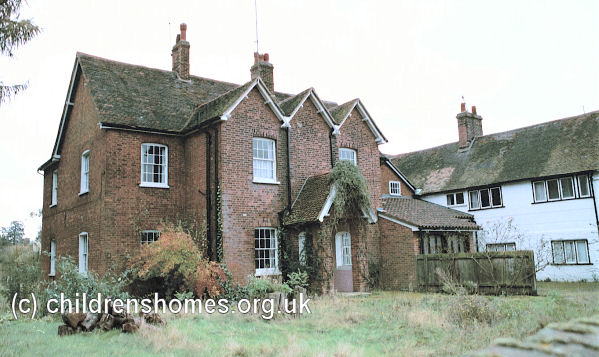Halstead Industrial School for Girls, Halstead, Essex
The Halstead Industrial School for Girls was founded in 1869 by Miss Lucy Greenwood, a Quaker, who for some years previously had worked to promote the welfare of the destitute and neglected children in the area. She had raised funds to erect a building on what became known as School Lane, Halstead, which on March 12th, 1869, was certified to accept up to 30 girls aged 6 to 16. As well as those sentenced by the courts to detention, the School also took voluntary cases.
As well as classroom education, the girls were prepared for domestic service with training given in needlework and knitting, with the older ones employed in laundry and housework.
The School did not have a formal management committee, but received support from the Quaker community and from friends of Miss Greenwood, including the textile magnate, Samuel Courtald, who had set up a silk mill in Halstead.
The School premises were soon expanded, taking over an adjacent house together with a large room, formerly occupied as a national school, which providing a spacious work-room and place of assembly. A house at the south-east side of Bois Field was used as accommodation for the older girls. Boise Field provided a large playing field for the girls' daily exercise. The School's buildings are shown on the 1898 map below.
The School site is shown on the 1898 map below.

Halstead Industrial School for Girls site, Halstead, c.1898.

Halstead Industrial School for Girls, original house, Halstead, 2000. © Peter Higginbotham
In the School's early years, the staff comprised a matron, schoolmistress and workroom assistant, with Miss Greenwood also living on the premises as resident manager. However, the post of matron was soon done away with and Miss Greenwood ran the establishment with a team of assistants which grew to include a housekeeper, assistant housekeeper, schoolteacher, cook, laundress, and sewing mistress. Perhaps indicating Miss Greenwood's declining health, the post of matron was reintroduced in 1893 when Miss E.J. Hounslow was holder of the role. Miss Greenwood died in 1895 and was succeeded as superintendent by Miss H.M. Newman.
In 1897, it was noted that the girls participated in 'musical drill with extension exercises'. They received invitations to treats in the neighbourhood from time to time and had concerts and other entertainments in the winter. Table and other games and a library were provided. The School had an Auxiliary Home at Walton-on-the-Naze where all the girls in turn could spend time, if well behaved.
On October 31st, 1910, Miss Binks succeeded Miss Newman as superintendent. The other staff now included a house matron, kitchen matron, laundry matron and sewing matron.
Major construction work took place at the School in 1910-11, replacing several old cottages on School Lane with new buildings. The new facilities included a sewing room, clothes room, washhouse, and extra dormitories.
Halstead Industrial School for Girls, new buildings erected 1901-11.
Following a decline in numbers being placed at the establishment, the School closed in February 1921. In 1924, the site was acquired by the Royal Eastern Counties Institution to increase their accommodation for 'mental defectives'. It then became known as Greenwood School, a special residential school for 'high grade girls'. The School ceased operation in 1998 and the buildings are now in private residential use.
Records
Note: many repositories impose a closure period of up to 100 years for records identifying individuals. Before travelling a long distance, always check that the records you want to consult will be available.
- None identfied at present — any information welcome.
Census
Bibliography
- Higginbotham, Peter Children's Homes: A History of Institutional Care for Britain's Young (2017, Pen & Sword)
- Mahood, Linda Policing Gender, Class and Family: Britain, 1850-1940 (1995, Univeristy of Alberta Press)
- Prahms, Wendy Newcastle Ragged and Industrial School (2006, The History Press)
Links
- None noted at present.
Except where indicated, this page () © Peter Higginbotham. Contents may not be reproduced without permission.


